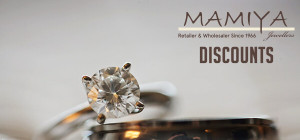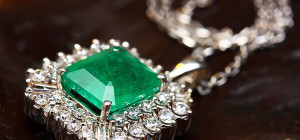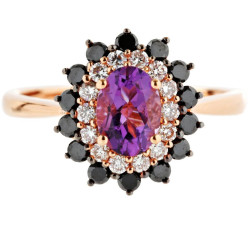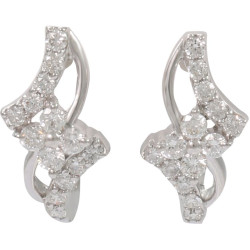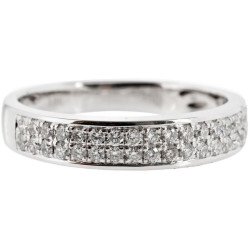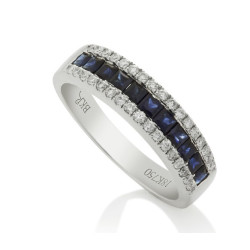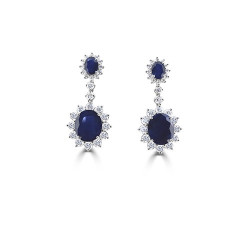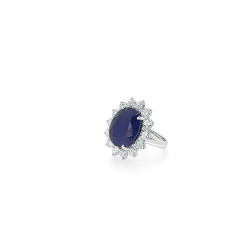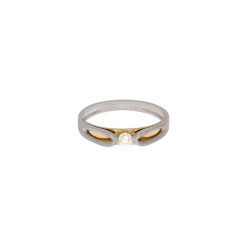
Diamond buyers are usually worried about getting ripped off while looking for a gem for their loved ones. The second most important concern for them is the budget that affects greatly their decision making. So, how you can buy a gemstone that is the best value for your money without overpaying for it? Here is exactly how you can do the price research for getting a diamond that is absolutely worth the money.
First, you need to understand how a gem is calculated in the trade. Actually, a gem’s cost is a multiply of its total carat weight and price per carat. This can be formularized like below:
Diamond’s Cost = Carat Weight X Price Per Carat
This means that entire price mechanism and variables depend on this simple formulation that you need to comprehend in order to make sure that you are paying correct price for your jewel. Let’s understand above formulation with examples. Assume that the price for a 0.50 carat round brilliant diamond is 4200 dollars, and then its cost would be:
Cost = 0.50 X 4200 = 2100 dollars
Similarly, if price for 0.74 carat round brilliant cut gem is 7100 dollars then its cost would be:
Cost = 0.74 X 7100 = 5325 dollars
Now, if you are thinking about how you can find the reliable price per carat figure for your gem then you should know that you can purchase weekly price sheet that is generated either by Rapaport or IDEX. This way, you can easily calculate a diamond’s price from a particular date.
However, in practical world, this report doesn’t make much sense as individual diamond retailers can sale a gem at much higher or much lower price than that of its Rap value. Why it happens depends on many factors. Let’s understand them step by step, here.
Diamonds have unique characteristics that affect its price to a greater range. Two diamonds of same carat weight may vary in the total number of inclusions they might have. If a diamond has more visible impurities within it, its value would be pretty lower than the price of a gem that has lesser number of visible impurities. Likewise, color plays a significant role in elevating a gemstone’s price in the trade market. So, there could be a number of diamond characteristics that can increase or decrease its price despite the fact that they have similar carat weight.
What’s more, if you buy a diamond in a setting, it will have a great impact on its overall value as the material in which a diamond is set could vary per piece of jewelry. Take for instance, if you buy a Another great reason why the Rap report is not a standard measure for evaluating a gem’s price is that it never takes into account how well a gemstone is cut. Besides this, this report also doesn’t include the payment terms, the grading alb that certifies a diamond, and the grading accuracy. All these above mentioned factors and dozens other like fluorescence cause a diamond’s price to vary from its Rap value. So, why you should consider a Rapaport report for gauging a gem’s price in trade market? This is because of the fact that many diamond sellers may use this report as a standalone tool to evaluate your gem’s price. You should always know that the Rapaport report shows a gem’s High Cash value and thus a diamond that is evaluated high on the report could actually be worthless. Oftentimes, jewelers use this report to misguide you. So, the intention of bringing Rapaport report into discussion here is to inform you about the fact that many infamous diamond sellers use this report to rip you off. So, how you can research a diamond’s price correctly? Researching a Diamond’s Price Correctly Doing the price comparison via using online diamond retail listing is the best method for evaluating a diamond’s real worth in the trade market. This way, you will be able to differentiate between two similar gems with similar specifications and find the one that is true value for your hard earned money. There are some well renowned diamond sellers in the online world who use specific diamond selection tool based on various parameters. Certain parameters that are currently being used are carat, VS2 clarity, excellent polish, round cut, no fluorescence, F color, and excellent symmetry. To better illustrate this point here, just remember that you should take into consideration all 4C’s o a diamond – Carat, cut, Color, and Clarity to see if they are identical. Only then you will be able to find the one that has better value than the other gem. Also, for avoiding any cheating in diamond buying process, always trust on some best retailers for your diamond purchase. There are a few renowned Diamonds Having Identical 4C’s and Price Adjustment Factors So, there are a number of factors that decide a gemstone’s price. In other words, diamond’s pricing involves so many variables and hence it’s a complex matter to comprehend for a common buyer like you. The best method to evaluate a gem’s price is to compare its price online. Don’t ever trust on the Rapaport report as this is a tool that benefits the vendors only. What’s more, try to buy lose diamond only e instead of buying it in a setting as any flaws in the gemstone can easily be camouflaged in a setting. This mean that if you are intended to buy a diamond wedding ring in platinum, first buy lose diamond then decide o its design in platinum setting. Always remember a golden rule while shopping for a diamond – great deals never exist but you can try to get some fair deals at least if you consider the facts being described in this blog post. Be sure, that more than one scenario will be applicable. This will definitely guide you on the right direction and you will be able to buy a gemstone that is true value for your heard earned money. Also, it will be a real gem for your dear one. Hope, the valuable information furnished here will be of great use to you.

